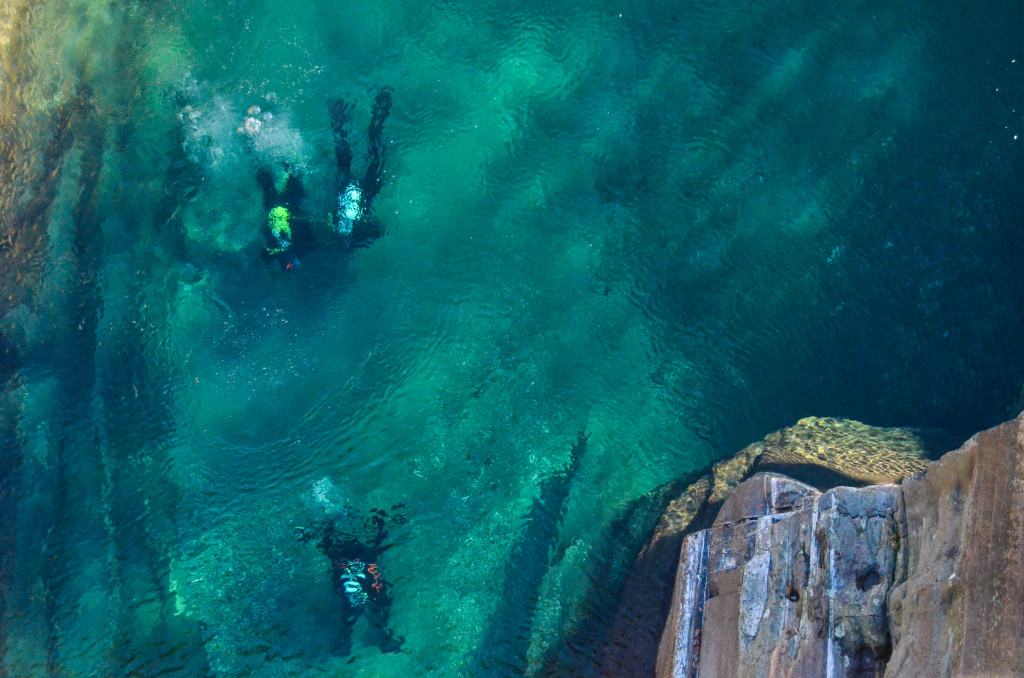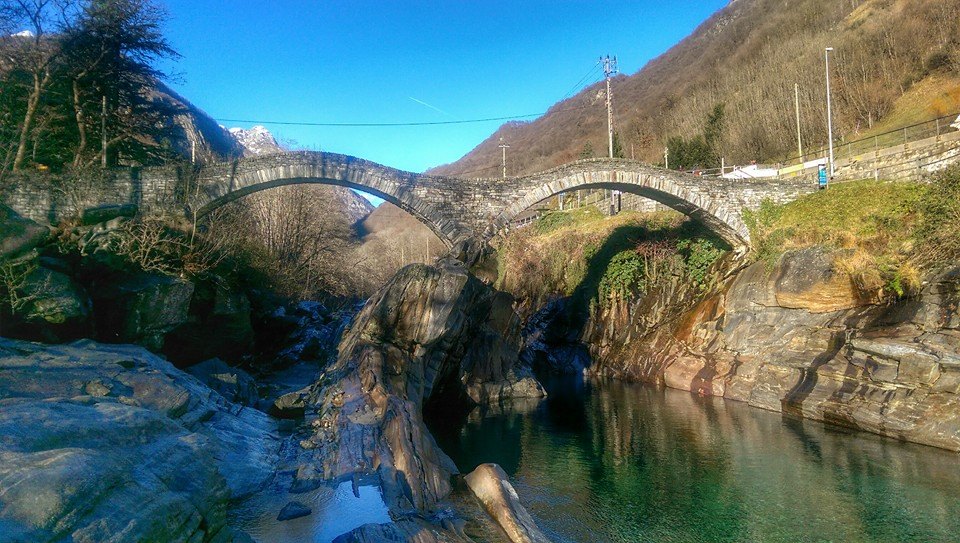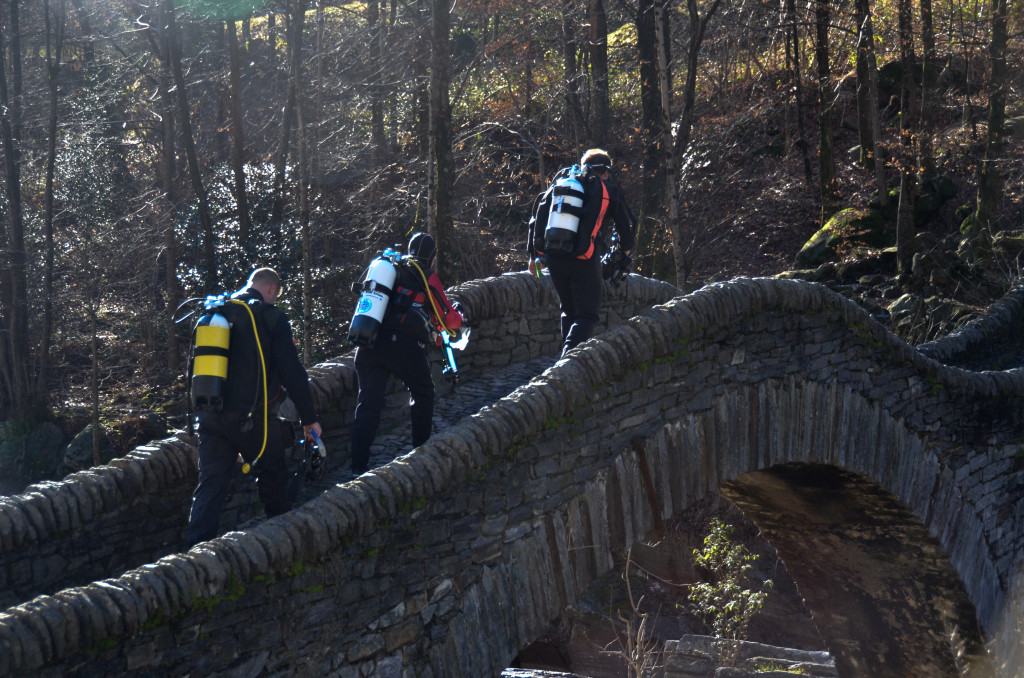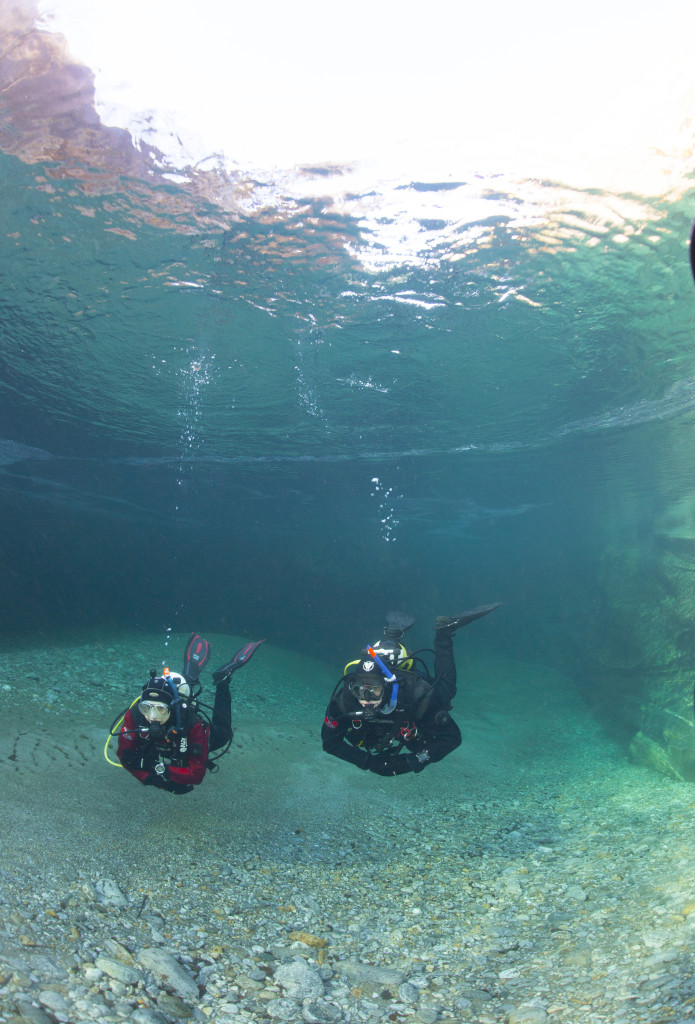Tucked away on the other side of some formidable mountain passes and long road tunnels sits the Italian part of Switzerland, the canton of Ticino. And tucked into a valley above the lakeside town of Locarno is a 19-mile-long (30km) river, famous for its clear waters and smooth rock surfaces eroded over centuries of water flow.
The Verzasca valley and its eponymous river might not offer the deepest or most wildlife-filled dives, but the area does offer something that not many easily accessible sites provide — rugged beauty both in and out of the water.
The two popular dive sites are about 5 minutes drive from each other, and the village of Lavertezzo makes a good base for a weekend drive trip. There is a hotel that caters to divers, which sits near an air-filling station and some excellent post dive pasta and pizzas. You can also stay in Locarno, which offers a large choice of après-dive activities and accommodation.
The Roman Bridge
This tends to be the first dive site of any visit as it’s the most picturesque, with an old bridge over the dive site, making for many great photo ops from both under and over the water. Even though the depth is generally around 23 feet (7m) here, it’s fairly easy for divers to make out people standing on the bridge and vice versa.
The entry point for this dive is over the bridge and requires you to carry all your dive gear from the parking lot over often slippery, smooth rocks — which can be quite uncomfortable in hot summer temperatures. You’ll also encounter many other tourists at the site during the summer, not just other divers, so expect an audience.
Amslerbecken
A few minutes further down the valley is the Amslerbecken, named after the famous photographer Kurt Amsler. There are only a few parking spaces, so I would suggest getting this dive in early. The access is also much harder than at the Roman bridge, and requires a bit of scrambling down the riverbanks. I would suggest doing a quick reconnaissance for the best route first. Here the dive is a bit longer with the focus on the smooth rock underwater.

Neither of these are long dives; depending on conditions they can last around 30 to 40 minutes. The water temperature tends to be around 46 to 50 Fahrenheit (8 to 10C) most of the year, so wear adequate exposure protection. I’ve dived here in June and December and the water was warmer in December, so you never know. During summer the valley gets plenty of sunshine, but in winter the sites might only get one hour of sunshine, roughly around midday, so plan accordingly.
No matter what time of year you go, the viz is great, but it’s best when the weather has been stable for a few days, without debris being washed down stream from rains further up the mountains. It will certainly be better than most other rivers you’ve dived, and on good days, it will be exceptional — really exceptional.
Upon arriving in the valley, you’ll notice the signs warning water users to be careful. This river might be beautiful, but it is dangerous; every year a few swimmers, divers, canoeists or other water-goers drown or get into trouble. The river has strong currents, and bad weather uphill can quickly and without warning change the river conditions. I would recommend a cross-river line and for first-time visitors, a Verzasca specialty course with one of the local dive centers.
Bonus fact: James Bond bungee jumped off the dam at the end of the valley in the film Goldeneye.




